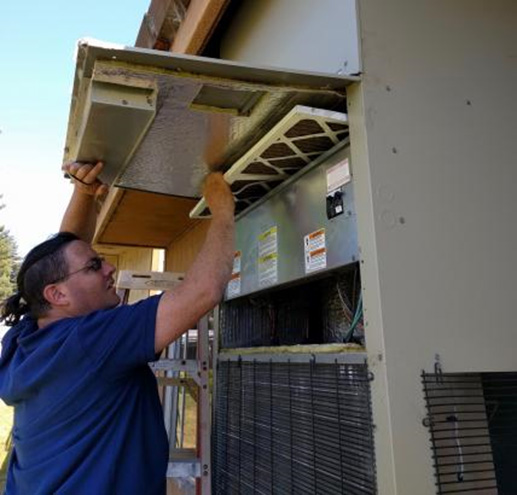Many California Classrooms Don’t Have Sufficient Ventilation
Roughly 85% of recently installed HVAC systems in K-12 classrooms investigated in California did not provide adequate ventilation, according to a study from the University of California, Davis, and Lawrence Berkeley National Laboratory (Berkeley Lab).
For the study, published in the journal Building and Environment, researchers visited 104 classrooms in 11 schools throughout California that had been retrofitted with new heating, ventilation and air conditioning (HVAC) units in the past three years. They evaluated the HVAC systems, carbon dioxide (CO2) concentrations, and indoor temperature and humidity through field inspections, monitoring, and a teacher survey.
“Previous research has shown that under-ventilation of classrooms is common and negatively impacts student health and learning,” explained lead author Rengie Chan, a research scientist with Berkeley Lab. “What isn’t known, however, is why this problem is so widespread and persistent.”
Indoor environmental quality matters
Ventilation helps remove indoor air pollutants such as volatile organic compounds, including formaldehyde, which can off-gas from building materials, finishes, and furniture. There is also increasing evidence that CO2 exhaled by building occupants is an indoor pollutant that can affect cognitive performance. This is particularly important in classrooms, where lots of people gather in a small space.
Standards for ventilation rates balance indoor air quality and energy efficiency. ASHRAE, a global professional society that sets standards for building performance, specifies a minimum ventilation rate for classrooms of 15 cubic feet per minute per person. In California, the 2016 Building Energy Efficiency Standards, also known as Title 24, have the same ventilation requirement for classrooms.
HVAC problems are widespread
Using measured CO2 concentrations and the number of people in the classroom, researchers found only about 15% of classrooms met the ventilation standard. Researchers characterized each HVAC system by documenting the number of problems due to its hardware, controls and filter maintenance. Classrooms with one or more HVAC problems tended to have lower ventilation rates and higher CO2 levels.

In addition to ventilation, thermal comfort impacts student performance. In this study, about 60% of the classrooms were warmer than the recommended average maximum temperature of 73°F. Also, 30% of the teachers surveyed were dissatisfied or very dissatisfied with the temperature in their classroom, and about 10% said the temperature interfered “a lot with the learning environment.”
A call to action
“Our study shows that proper installation, operation, and maintenance of HVAC systems is necessary to provide adequate ventilation in classrooms,” said co-author Theresa Pistochini, engineering manager at the UC Davis Western Cooling Efficiency Center.
The Division of the State Architect provides oversight of construction projects, but many HVAC replacement projects are exempt from their review. Yet these projects must still meet Title 24 requirements. This puts the onus of ensuring compliance on school districts.
“There are nearly 1,000 school districts in California,” Pistochini said. “With limited resources, it is unrealistic to expect that school district personnel be adequately trained to ensure compliance. Increased oversight of HVAC replacements, or other ways to address widespread inadequate ventilation in California classrooms, are needed, likely through state intervention.”
Researchers recommend the following actions to improve ventilation rates in classrooms:
- Complete commissioning and acceptance testing of new HVAC systems as required by Title 24.
- Run HVAC fans when classrooms are occupied to bring in fresh air.
- Replace filters 2-3 times per school year.
- Monitor classroom CO2 concentrations. Thermostats with CO2 sensors and stand-alone sensors are widely available.
- Test ventilation rates in existing HVAC systems and make corrections when needed.
Millions of California children spend a large portion of their day indoors at school. Ensuring adequate classroom ventilation will help protect and support the health and well-being of students and teachers.
Authors and funding
Additional study authors include Xiwang Li and Brett Singer of Berkeley Lab, and David Vernon, Sarah Outcault, Angela Sanguinetti, and Mark Modera of UC Davis.
The study was supported by the Electric Program Investment Charge, managed by the California Energy Commission.
Media contact(s)
Theresa Pistochini, UC Davis Western Cooling Efficiency Center, 530-752-3262, tepistochini@ucdavis.edu
Kat Kerlin, UC Davis News and Media Relations, 530-752-7704, kekerlin@ucdavis.edu

